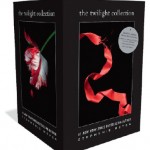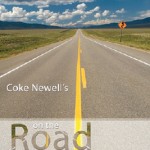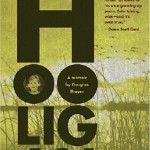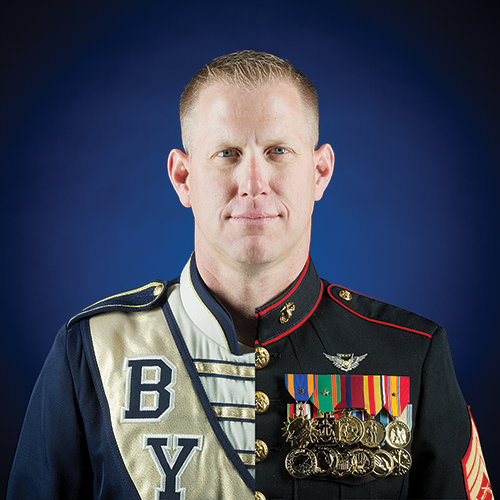Grads capture a nation of young readers; other authors share stories of growing up Mormon.
Hey I hope you’re, like, cool with teen-speak in young-adult (YA) novels. Millions of YA readers are flocking to books by Stephenie Morgan Meyer (BA ’97) and Janette Johnson Rallison (’92), two nationally renowned authors who have definitively answered the question posed by many a perplexed parent: “But, darling, what do you do after majoring in English?” There’s a good chance you’ll be giving copies of Meyer’s and Rallison’s novels to your children or grandchildren (and even taking your own surreptitious peek).
 Stephenie Meyer’s Twilight series, composed of Twilight (Little, Brown; 2005; 498 pp.; $9.99), New Moon (2006), and Eclipse (2007), has ranked no. 1 for some time among YA series—ahead of no. 2 Harry Potter—on the New York Times best-seller list. A fourth novel, Breaking Dawn, is slated for publication in 2008. Twilight introduces Bella Swan, a 17-year-old junior transfer from Phoenix to Forks High School on the Olympic Peninsula in Washington. Bella is smitten with Edward Cullen, a pale, “devastatingly, inhumanly beautiful” (p. 19), “gorgeous” (p. 22) high school junior—and, oh yeah, a vampire. She soon becomes friends with Jacob Black, a tall, darkly handsome freshman—and, oh yeah, a werewolf. For nearly 1,800 pages, and in considerable detail, we follow Bella in her discovery of Edward’s secret: he is a long-in-tooth member of a clan of “good” vampires who have sworn off human blood. Still, Bella is a toothsome temptation, and Edward’s outer gentleman must war with his inner vampire and resist Bella’s importunings to make her his deathless mate. The question woven through these tomes is whether Bella will choose vampire or werewolf. Unlikely as it seems, the story is engrossing. In a New York Times review (Aug. 12, 2007), Leisl Schillinger notes that Meyer the YA vampire writer “happens to be a wholesome Mormon mother of three . . . , [and she] is well aware of the jarring contradiction between her real and imaginary lives.” Schillinger notes that Meyer has been asked more than once, “What’s a nice Mormon girl like you doing writing about vampires?”
Stephenie Meyer’s Twilight series, composed of Twilight (Little, Brown; 2005; 498 pp.; $9.99), New Moon (2006), and Eclipse (2007), has ranked no. 1 for some time among YA series—ahead of no. 2 Harry Potter—on the New York Times best-seller list. A fourth novel, Breaking Dawn, is slated for publication in 2008. Twilight introduces Bella Swan, a 17-year-old junior transfer from Phoenix to Forks High School on the Olympic Peninsula in Washington. Bella is smitten with Edward Cullen, a pale, “devastatingly, inhumanly beautiful” (p. 19), “gorgeous” (p. 22) high school junior—and, oh yeah, a vampire. She soon becomes friends with Jacob Black, a tall, darkly handsome freshman—and, oh yeah, a werewolf. For nearly 1,800 pages, and in considerable detail, we follow Bella in her discovery of Edward’s secret: he is a long-in-tooth member of a clan of “good” vampires who have sworn off human blood. Still, Bella is a toothsome temptation, and Edward’s outer gentleman must war with his inner vampire and resist Bella’s importunings to make her his deathless mate. The question woven through these tomes is whether Bella will choose vampire or werewolf. Unlikely as it seems, the story is engrossing. In a New York Times review (Aug. 12, 2007), Leisl Schillinger notes that Meyer the YA vampire writer “happens to be a wholesome Mormon mother of three . . . , [and she] is well aware of the jarring contradiction between her real and imaginary lives.” Schillinger notes that Meyer has been asked more than once, “What’s a nice Mormon girl like you doing writing about vampires?”
Janette Rallison, another BYU English alum, has over 600,000 copies of her seven entertaining YA romantic comedies in print. Her award-winning novels are included on several national librarian-recommended reading lists. More tellingly, my well-read 14-year-old granddaughter in Phoenix thinks Rallison’s novels are “cool.”
 The typical “I-was-never-so-embarrassed” teen dilemmas play out in Rallison’s recent novel, How to Take the Ex Out of Ex-Boyfriend (G.P. Putnam’s Sons; 265 pp.; $15.99). When Giovanna’s twin brother takes on the high school’s popular clique and runs for student body president, she, naturally, has to support him and dump her boyfriend, who has signed on as the rich, popular kid’s campaign manager. Complications ensue, misunderstandings arise, problems must be solved, and true love must find a way. Other “oh-my-gosh!” comic dilemmas play out in It’s a Mall World After All (2006), All’s Fair in Love, War, and High School (2003), and Revenge of the Cheerleaders (2007), in which Chelsea the cheerleader undertakes to avenge the cheerleading squad’s public humiliation caused by her younger sister’s boyfriend, Rick, and his rock band. Well, you get the gist. It’s a perilous (teenage) jungle out there.
The typical “I-was-never-so-embarrassed” teen dilemmas play out in Rallison’s recent novel, How to Take the Ex Out of Ex-Boyfriend (G.P. Putnam’s Sons; 265 pp.; $15.99). When Giovanna’s twin brother takes on the high school’s popular clique and runs for student body president, she, naturally, has to support him and dump her boyfriend, who has signed on as the rich, popular kid’s campaign manager. Complications ensue, misunderstandings arise, problems must be solved, and true love must find a way. Other “oh-my-gosh!” comic dilemmas play out in It’s a Mall World After All (2006), All’s Fair in Love, War, and High School (2003), and Revenge of the Cheerleaders (2007), in which Chelsea the cheerleader undertakes to avenge the cheerleading squad’s public humiliation caused by her younger sister’s boyfriend, Rick, and his rock band. Well, you get the gist. It’s a perilous (teenage) jungle out there.
In “How I Came to Write”: LDS Authors for Young Adults (Center for the Study of Christian Values in Literature; 292 pp.; $15), Jesse S. Crisler and Christopher E. Crowe (’76), have created “the most complete guide to LDS authors of YA novels currently available” for YA readers, parents, librarians, and junior high and high school teachers. BYU English professors Crisler and Crowe have collected 66 brief autobiographies of LDS writers of YA novels, with lists of associated YA publications, available Web site addresses, related reading options, and a history of LDS YA authors.
 Coke Newell’s (’91) autobiographical novel/memoir, On the Road to Heaven (Provo: Zarahemla Books; 333 pp.; $16.95), follows the spiritual journey of Kit West, a free-spirited, “tree-hugging, Zen-spouting, vegetarian, Colorado mountain hippie” (p. 335) born of free-spirited parents, nurtured by Henry David Thoreau, steeped in Jack Kerouac, and refined and sheen-polished by the Book of Mormon.
Coke Newell’s (’91) autobiographical novel/memoir, On the Road to Heaven (Provo: Zarahemla Books; 333 pp.; $16.95), follows the spiritual journey of Kit West, a free-spirited, “tree-hugging, Zen-spouting, vegetarian, Colorado mountain hippie” (p. 335) born of free-spirited parents, nurtured by Henry David Thoreau, steeped in Jack Kerouac, and refined and sheen-polished by the Book of Mormon.
Kit’s unlikely and unusual odyssey through the Rocky Mountains and desert wilderness to Mormonism and buffeting as an LDS missionary in Colombia may startle readers used to tamer stuff. It is, however, one of the best, truest, and most spiritual accounts we have of the life-changing journey that is an LDS mission. Elder West, wholly and “anxiously engaged” in the rough-and-tumble of missionary work in a third-world country, undergoes a transformation like that of Saul/Paul, Joseph Smith, or Wilford Woodruff, and becomes a thoroughly unconventional, wonderfully successful missionary. Coke Newell, the real-life version of Kit West, is a professional journalist who was, for more than a decade, a media-relations officer at Church headquarters. If you climb on, hold on to your hat—it’s an amazing ride!
 Douglas Thayer’s (BA ’55) unique memoir, Hooligan: A Mormon Boyhood (Zarahemla Books; 186 pp.; $16.95), is about growing up in hardscrabble, preindustrial, pre–Second World War Provo. In 27 quick-moving chapters, Thayer recalls Provo, like Mark Twain’s Hannibal, as “a heavenly place for a boy.” With oodles of unsupervised time on his hands, a fishing pole in one hand and a .22 in the other, young Doug roamed Provo’s foothills and canyons, waded Utah Lake’s marshes, swam (mostly in the buff) and fished in the unspoiled Provo River.
Douglas Thayer’s (BA ’55) unique memoir, Hooligan: A Mormon Boyhood (Zarahemla Books; 186 pp.; $16.95), is about growing up in hardscrabble, preindustrial, pre–Second World War Provo. In 27 quick-moving chapters, Thayer recalls Provo, like Mark Twain’s Hannibal, as “a heavenly place for a boy.” With oodles of unsupervised time on his hands, a fishing pole in one hand and a .22 in the other, young Doug roamed Provo’s foothills and canyons, waded Utah Lake’s marshes, swam (mostly in the buff) and fished in the unspoiled Provo River.
In this memoir, as in his fiction, Thayer employs common sense and human freedom as poles across the ironic divide between the ought-to-be ideals of innocence, goodness, and perfection and the as-it-is realities of experience, human imperfections, and the blunderings of a Mormon kid who wants to be good but at times slips up. In Hooligan, Thayer, who is beginning his (record) sixth decade of teaching English at BYU, leads us in discovering, again and again, the ironies which dog us all on our endless journeys from innocence to experience. Young Douglas, intent on adding a “Perfect Boy” palm to his Eagle Scout badge, runs repeatedly into the brick wall separating the ideal boy and the real boy and the surprising necessity of making uneasy compromises with his ideals. Irony lurks on every page of this delightful book: in Doug’s fervent but unanswered prayers for divine direction, in well-stocked fishing holes, and in his first adolescent confrontations with temptations of the flesh. In one instance, at least, righteousness triumphs—Doug is momentarily bewildered at a high school prom by the stark, beckoning reality of a backless, strapless evening dress. Doug righteously avoids putting his bare hand on the girl’s warm, bare back by carefully spreading the clean pocket handkerchief (provided by his mother) over his right hand, and then, “properly insulated, put[ting] my hand onto her back.” His righteousness is instantly rewarded: “She thought I was cute and held me close with her long, naked arms” (p. 181). This is a delightful read!
Richard H. Cracroft is BYU’s Nan Osmond Grass Professor in English emeritus. He joined the English Department faculty in 1963.
WHAT ARE FACULTY READING?
By Brittany Karford Rogers (BA ’07)
BYU professors, faculty, and staff hit the books each fall too. Fall semester, the Faith and Intellect Book Seminar—a book club, of sorts, put on by the BYU Faculty Center—invited faculty and staff to join in reading and discussing The Law of God: The Philosophical History of an Idea, by Rémi Brague.
In the book Brague explains how, in ancient times, it was widely believed that deity intervened to establish the codes that governed society. The law of ancient Israel, for instance, was seen as divine revelation. But modern societies, far from connecting law and divinity, started to think of law simply as the rule the human community gives itself.Brague explores the implications of this disconnect and what it means for the contemporary world.
James E. Faulconer (BA ’72), associate director of the BYU Faculty Center and professor of philosophy, discovered Brague’s book during his summer sabbatical in Paris. Faulconer organized the first faculty book seminar in 1990, covering 10 meaty reads in seminars since then.
WHAT ARE FRESHMEN READING?
 The first homework assignment of the 2007–08 academic year was given right smack in the middle of the lazy days of summer. All incoming freshmen and new students were asked to read Linda R. Monk’s The Words We Live By: Your Annotated Guide to the Constitution by the first day of fall semester.
The first homework assignment of the 2007–08 academic year was given right smack in the middle of the lazy days of summer. All incoming freshmen and new students were asked to read Linda R. Monk’s The Words We Live By: Your Annotated Guide to the Constitution by the first day of fall semester.
“This is the first time BYU has heavily pushed a (freshman) summer reading,” says Bryce D. Bunting (BS ’06), associate dean of the first-year experience. “We hoped to initiate a campus-wide conversation.”
President Cecil O. and Sister Sharon Samuelson opened that conversation at the semester’s first devotional, “Year of the Constitution,” where President Samuelson entreated students to read the book. Students also received a lesson on the Constitution from one of the most prominent advocates of the Constitution in the nation, Chief Justice of the United States John Roberts. In his fall forum address at BYU, Chief Justice Roberts spoke about the history and trials of the United States Constitution—the longest-standing constitution in the world.
Nearly 2,000 students participated in the summer reading, and a similar freshman summer reading can be expected this summer.









